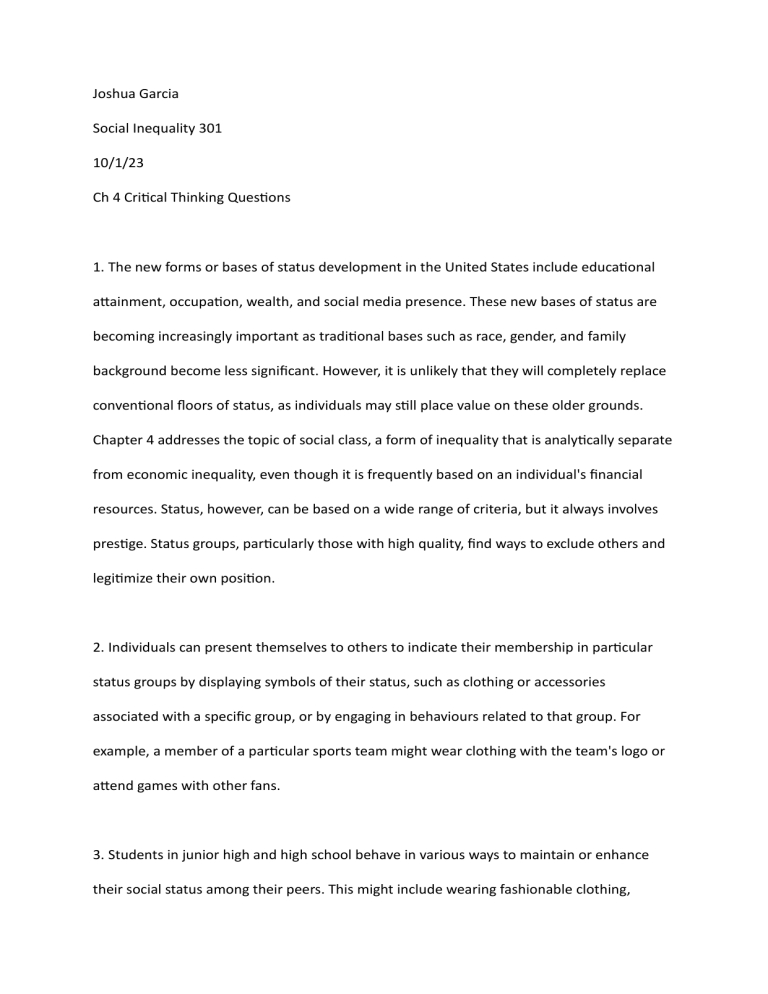
Joshua Garcia Social Inequality 301 10/1/23 Ch 4 Critical Thinking Questions 1. The new forms or bases of status development in the United States include educational attainment, occupation, wealth, and social media presence. These new bases of status are becoming increasingly important as traditional bases such as race, gender, and family background become less significant. However, it is unlikely that they will completely replace conventional floors of status, as individuals may still place value on these older grounds. Chapter 4 addresses the topic of social class, a form of inequality that is analytically separate from economic inequality, even though it is frequently based on an individual's financial resources. Status, however, can be based on a wide range of criteria, but it always involves prestige. Status groups, particularly those with high quality, find ways to exclude others and legitimize their own position. 2. Individuals can present themselves to others to indicate their membership in particular status groups by displaying symbols of their status, such as clothing or accessories associated with a specific group, or by engaging in behaviours related to that group. For example, a member of a particular sports team might wear clothing with the team's logo or attend games with other fans. 3. Students in junior high and high school behave in various ways to maintain or enhance their social status among their peers. This might include wearing fashionable clothing, participating in extracurricular activities, or associating with famous students. Gossip and social media can also play a role in status maintenance, as students strive to present themselves positively and gain attention from others. 4. Forming tightly knit status groups may encourage fragmentation in the United States, as individuals may identify more strongly with their group than with the broader society. However, these groups can also enrich and strengthen our diversity by providing a sense of community and shared identity among members. Individuals need to balance their membership in a particular group with belonging to the larger society.
